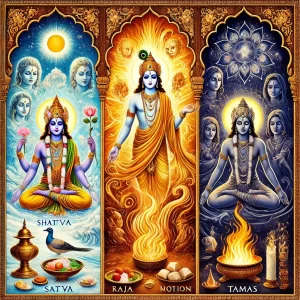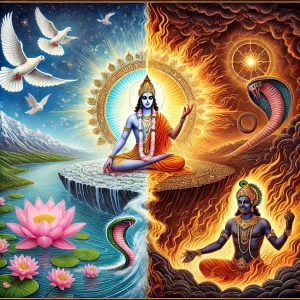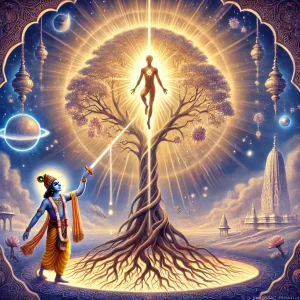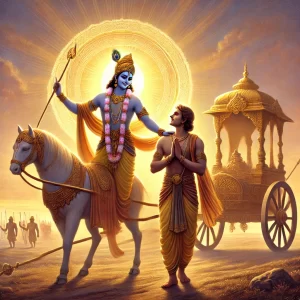
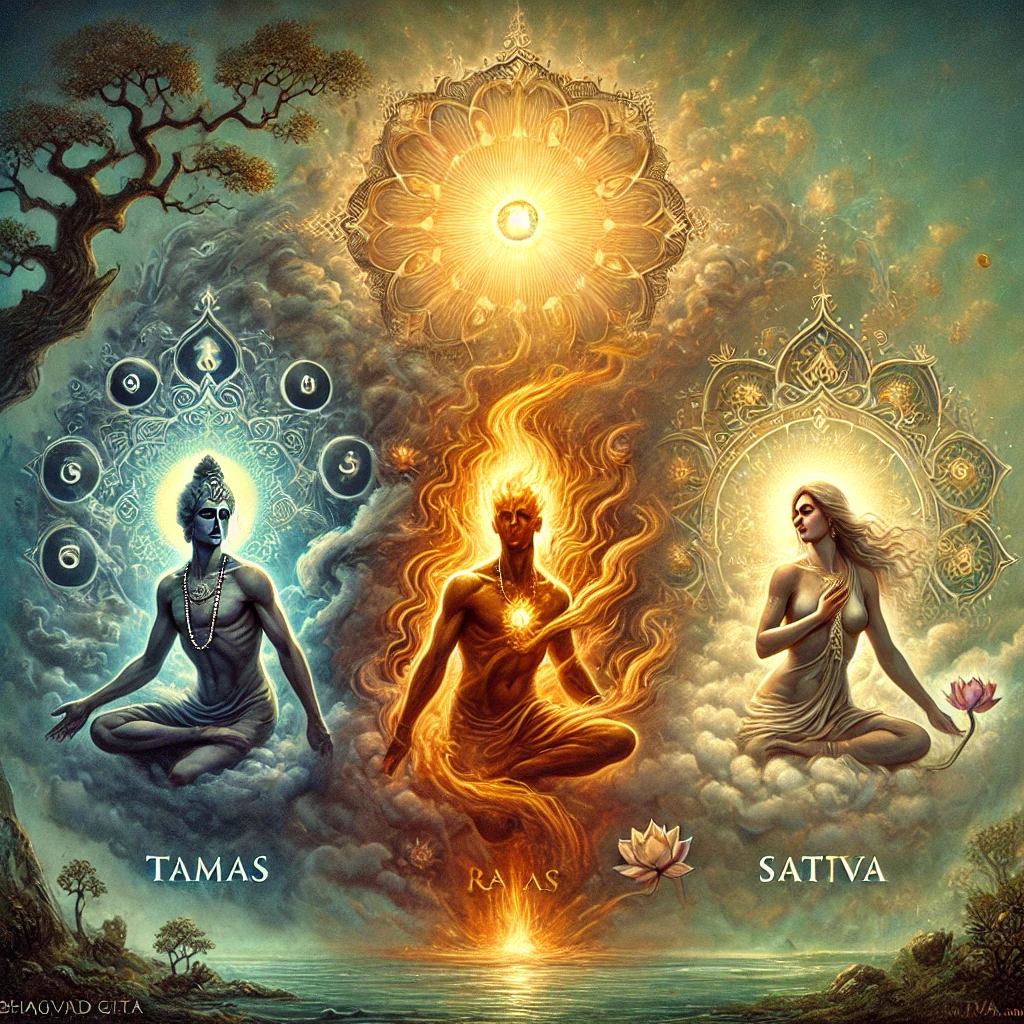
— Guna Traya Vibhaga Yoga: The Yoga of the Division of the Three Gunas
Chapter 14 of the Bhagavad Gita, Guna Traya Vibhaga Yoga, offers a unique and transformative perspective on human behavior, personality, and spiritual progress. Lord Krishna explains that all beings are influenced by three fundamental qualities or gunas:
These gunas exist in varying degrees within every person and are constantly interacting with each other. By observing our tendencies and actions through this lens, we gain deep insight into why we think, feel, and behave the way we do—and how we can consciously move toward higher states of awareness.
Let’s explore five essential life lessons from Chapter 14, with reflections on how to apply them daily.
1. You Are Not Your Nature—You Are Beyond It
Krishna begins by teaching that though we may be born into a body governed by the three gunas, our true Self (the soul) is beyond all three. These qualities shape our personality, but they do not define our eternal essence.
Verse 5: “Sattva, rajas, and tamas—these are the qualities born of nature that bind the soul to the body.”
Lesson: Don’t be discouraged by your moods or habits. Whether you feel lazy, restless, or peaceful—remember that these are passing states, not your true identity. You are the awareness observing them. With that knowledge, you gain freedom from their grip.
2. Rajas Fuels Action, But Also Attachment
The rajas guna is associated with passion, ambition, restlessness, and desire. It’s what pushes us to achieve, succeed, and stay active. But it also creates attachment to results, anxiety, and burnout if not balanced.
Verse 9: “Rajas binds the soul through attachment to action and its fruits.”
Lesson: Use the energy of rajas wisely. It can help you grow and achieve goals, but without mindfulness, it can lead to endless striving and dissatisfaction. Practice detachment and pause often to check—Am I acting from inspiration or compulsion?
3. Tamas Is the Force of Inertia and Confusion
Tamas is the guna of ignorance, laziness, delusion, and resistance to change. It’s what makes us procrastinate, avoid truth, or feel stuck in dull routines. While tamas has a role (like rest and sleep), it can pull us downward if we let it dominate.
Verse 9: “Tamas binds by ignorance, causing delusion and neglect of duty.”
Lesson: When tamas rises—feeling heavy, sleepy, or uninspired—respond with gentle effort. Take a walk, read something uplifting, clean a space, or meditate for 5 minutes. Small steps slowly dissolve inertia and rekindle clarity.
4. Sattva Leads to Clarity, Peace, and Liberation
Sattva is the guna of light, balance, purity, and harmony. It promotes wisdom, contentment, truth, and spiritual growth. A sattvic life is calm yet alert, active yet detached, joyful without craving.
Verse 6: “Sattva, being pure, is illuminating and free from sorrow. It binds by attachment to knowledge and joy.”
Lesson: Cultivate sattva by choosing clean food, uplifting thoughts, mindful habits, and kind actions. Sattva isn’t perfection—it’s the gradual alignment of your daily life with your inner peace. Even 10% more sattva can make 100% difference in your mood and clarity.
5. Go Beyond All Three—And Find True Freedom
While sattva is the highest guna, Krishna says the goal is not to remain bound by it either—but to transcend all three, entering the state of pure being. This is the state of spiritual liberation (moksha), where one is no longer affected by ups and downs, praise or blame, restlessness or laziness.
Verse 20: “When one rises above the three gunas, he becomes free from birth, death, old age, and sorrow, and attains immortality.”
Lesson: Don’t be obsessed with “being good” all the time. Instead, be aware. Observe your state of mind with curiosity and gentleness. The more aware you become, the less you’re controlled by your inner patterns—and the more you live from your true nature.
Final Thoughts
Chapter 14 of the Bhagavad Gita gives us a powerful framework for understanding our mental and emotional states—not with judgment, but with awareness. It helps us identify whether we are being ruled by tamas, rajas, or sattva, and encourages us to rise beyond all three into the freedom of pure consciousness.
“He who transcends the three gunas is free from birth, death, and sorrow—and dwells in the Self.” – Gita 14:20“
Whether you’re caught in restlessness, laziness, or clarity, remember:
You are not the storm. You are the sky it passes through.

